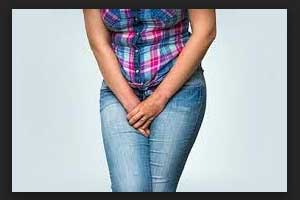- Home
- Editorial
- News
- Practice Guidelines
- Anesthesiology Guidelines
- Cancer Guidelines
- Cardiac Sciences Guidelines
- Critical Care Guidelines
- Dentistry Guidelines
- Dermatology Guidelines
- Diabetes and Endo Guidelines
- Diagnostics Guidelines
- ENT Guidelines
- Featured Practice Guidelines
- Gastroenterology Guidelines
- Geriatrics Guidelines
- Medicine Guidelines
- Nephrology Guidelines
- Neurosciences Guidelines
- Obs and Gynae Guidelines
- Ophthalmology Guidelines
- Orthopaedics Guidelines
- Paediatrics Guidelines
- Psychiatry Guidelines
- Pulmonology Guidelines
- Radiology Guidelines
- Surgery Guidelines
- Urology Guidelines
Update on Nonsurgical Treatment of Urinary Incontinence in Women-Check it out

Urinary incontinence, the involuntary leakage of urine, is often underdiagnosed and undertreated. It can be caused by increased bladder pressure, nerve damage, muscular dysfunction or medication. But whatever may be the cause it is a distressing and embarrassing symptom for women.
Agency for Healthcare Research and Quality (AHRQ) under its effective
About 17 per cent of adult women have urinary incontinence (UI), classified as stress, urgency, or mixed. Out of three main types
- Stress urinary incontinence, UI is associated with an inability to retain urine with activities that increase intraabdominal pressure.
- Urgency UI is associated with the sudden, compelling urge to void.
- Mixed UI occurs when both are present.
Key Findings are-
- Hormones and periurethral bulking agents, result in better urinary incontinence (UI) outcomes than no treatment.
- For stress UI, among treatments commonly used as first- or second-line interventions, behavioural therapy is more effective than either alpha agonists or hormones. Combination behavioural therapy and hormones are more effective than alpha agonists. Alpha agonists, in turn, are more effective than hormones.
- There is insufficient evidence comparing periurethral bulking agents and intravesical pressure release, treatments used as third-line interventions for women with stress UI.
- For urgency UI, among treatments commonly used as first- or second-line interventions, behavioural therapy is more effective than anticholinergics.
- Botox (Onabotulinum toxin A) may be more effective than neuromodulation as third-line therapy for women with urgency UI.
- Dry mouth is the most common side effect of pharmacological interventions, particularly with anticholinergics. Duloxetine is associated with numerous constitutional adverse effects such as nausea, insomnia, and fatigue.
- Serious adverse events are rare for all interventions. Onabotulinum toxin A is associated with risk of urinary tract infections and urinary retention.
- Periurethral bulking agents are associated with erosion in a small percentage of women.
In a nutshell, most nonpharmacological and pharmacological interventions are more likely to improve UI outcomes and quality of life compared to no treatment. Behaviour Therapy, alone or in combination with other interventions, is generally more effective than 2nd line (pharmacological) therapies alone for both stress and urgency UI. Common adverse events with pharmacological treatments include dry mouth, nausea, and fatigue. BTX is associated with urinary infections and retention. Periurethral bulking agents are associated with erosion and need for surgical removal.

Disclaimer: This site is primarily intended for healthcare professionals. Any content/information on this website does not replace the advice of medical and/or health professionals and should not be construed as medical/diagnostic advice/endorsement or prescription. Use of this site is subject to our terms of use, privacy policy, advertisement policy. © 2020 Minerva Medical Treatment Pvt Ltd